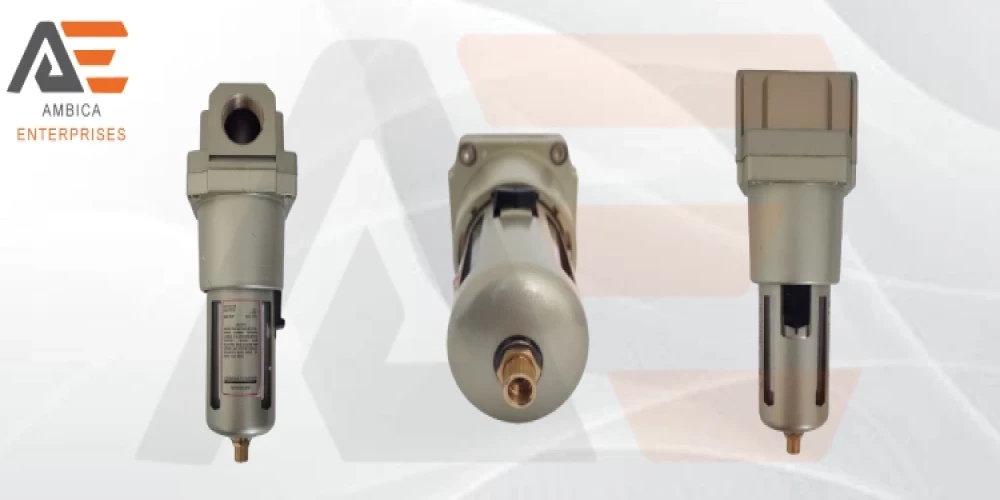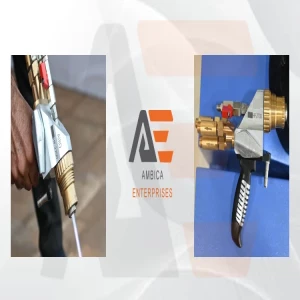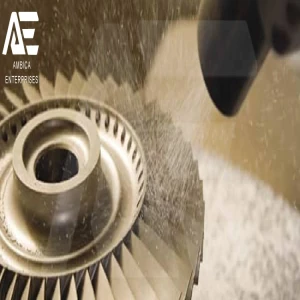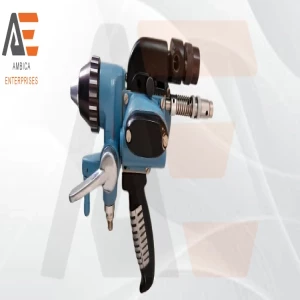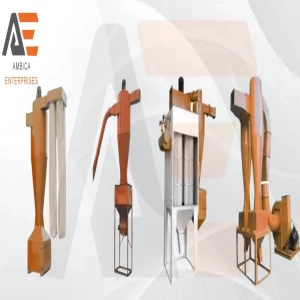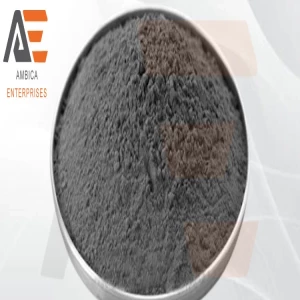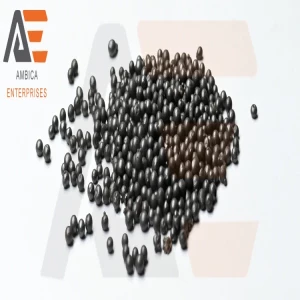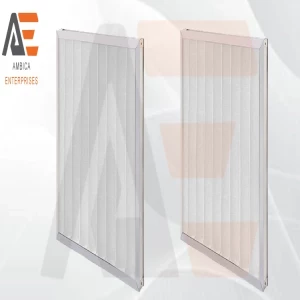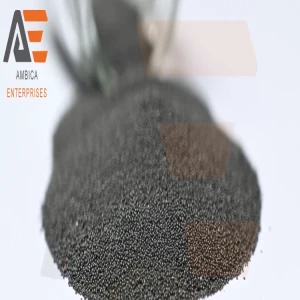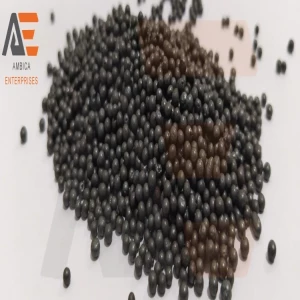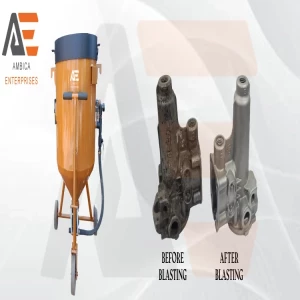The moisture trap is a device that allows the sand blasting compressed air to shed water. As the air is compressed, heat is generated. As this hot air passes through the heat exchanger to lower the air temperature, water in suspension (humidity) is condensed. Generally, a compressor is fitted with a moisture trap in Sand blasting. This first trap catches most of the water. However, as the compressed air continues to cool, additional moisture condenses in the bull hose.
his remaining moisture is trapped by the moisture separator just before it enters the PBT. This trapping is done either with a centrifuge-style separator or with a replaceable filter element-style separator. Generally, it is necessary to leave an air bleed valve open in the bottom of the moisture trap when abrasive sand blasting to allow the moisture to be expelled.
Moisture Trap in Sand Blasting
The Sand blasting Machine process in the blast pot and at the sand blast nozzle might be impacted by moisture. The air movement is slowest in the blast pot. Air rapidly cools as a result. Water vapour forms when the air cools, and it slowly condenses into water droplets in the pot. They then moisten the abrasive. The tendency of wet abrasives to form clumps causes erratic or complete cessation of abrasive flow. The sooner moisture impacts abrasive flow, the smaller the abrasive particles are. To maintain a consistent abrasive flow, blasters frequently start and stop abrasive sand or shot blasting machine, and in most circumstances, they increase abrasive flow to counter the wet abrasive. However, these methods result in lost manufacturing time and higher material costs. In essence, steel is cleaned with more abrasive at a slower rate. When lead paint is included, the requirement to treat hazardous blasting debris can result in greater treatment costs as well as increased abrasive use.
The sand blasting nozzle is a natural air conditioner by design. When moisture-filled hot air exits the blast nozzle, condensation occurs instantly. Dry air that exits the blast nozzle is expensive, as most blasters have experienced. However, air leaving the nozzle is hazy or foggy when moisture is present. On the steel surface, a trail of wetness can occasionally be seen after abrasive blasting machine operations. On ferrous metals, the moisture trail causes a phenomena known as "flash rusting." The removal of flash rust may be required by standards since it can hinder coating adhesion. If the specification is followed, the contractor may be required to sweep blast the roughly one thousand square feet that have already been blasted. With longer manufacturing times and higher abrasive costs, the contractor's profit starts to decline.
For More Information about portable sand blasting machine, please visit our Website.
Moisture in the Compressor
As the air temperature in the air compressor fluctuates, moisture develops there. The air at the compressor can reach a maximum temperature of 190 F. (88 C). Until the temperature of the compressed air falls, water vapour will not condense. The vaporous water condenses into water droplets when the temperature of the compressed air decreases. As the temperature of the compressed air decreases, these water droplets keep forming. In an eight-hour workday, compressors have been reported to produce up to 20 gallons (75.70 litres) of water. The airlines and blast pot pipes transport this liquid. Problematic is the condensing water vapour.
For More Information about Grit blasting machine, please visit our Website.
So what type of moisture trap should we use?
We recommend two options.
A centrifugal moisture separator is mounted at the inlet. Instead of using a filter to remove moisture, these traps cause the incoming air to cycle about, impinging against the inner steel and forcing the heavier moisture to attach to the inner walls and drain through a lower valve. There is minimal to no pressure loss in this process.
Option 2 is a stand-alone moisture separator that uses air expansion as well as a stainless steel coalescent element. The expanding air “shakes” out the moisture while maintaining the valuable pressure while the steel element provides surface tension, further coalescing moisture from the air.
Recent Technology in Entrained Moisture Removal
There are four main categories of technology for removing entrained moisture from compressed air:
- air-cooled aftercoolers,
- water-cooled aftercoolers,
- refrigerated dryers, and
- chemical and regenerative desiccant dryers.
Steel Shot supplier is the Leading Manufacturer & Supplier of abrasive blasting media like steel shot, mild steel shot, high carbon steel shot, cast steel shot, cut wire steel shots, stainless steel shot, copper slag, glass beads, quartz sand, garnet sand, aluminium oxide, plastic abrasive media, etc. We also provide all types of abrasive portable sand blasting machines and cabinet-type shot blasting machines in India at a low price with the best quality.

